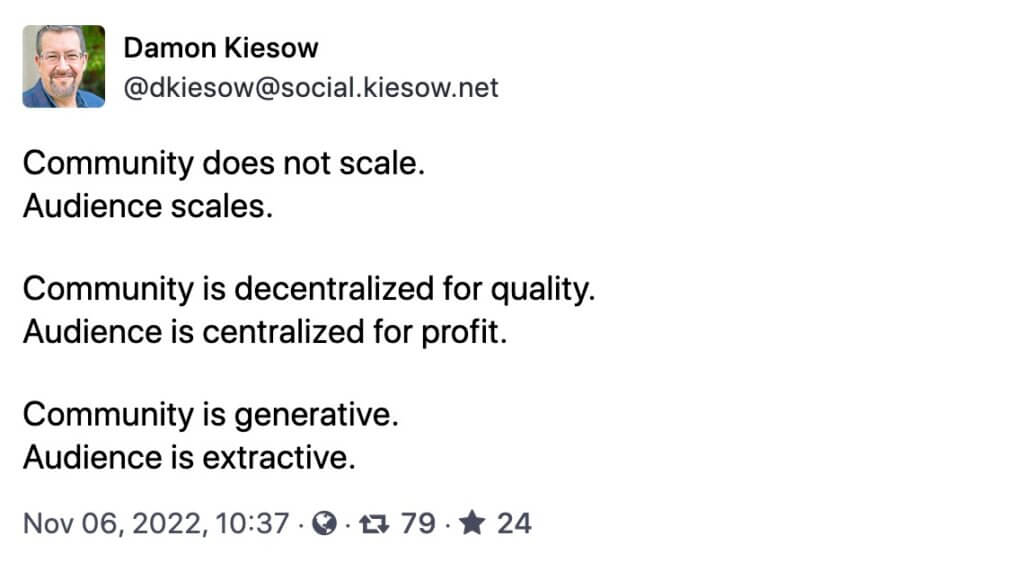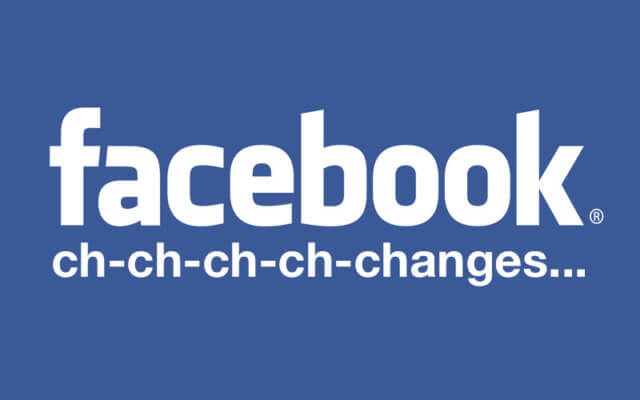How the Responsibilities of Conferences Mirror Those of Media Platforms
Rereading a 2012 post by Jeff Jarvis, I was struck by the parallels between his take on news organizations’ responsibilities to their platforms and the responsibilities of conferences. Here’s the post in full:
Users come first
“A platform without users is nothing. That is why [it] was wrong for Twitter to put a sponsor ahead of users. That is why Twitter is right to fight efforts to hand over data about users to government. That’s why newspapers built church/state walls to try to protect their integrity against accusations of sponsor influence. That is why Yahoo was wrong to hand over an email user to Chinese authorities; who in China would ever use it again? Screw your users, screw yourself.”
—Jeff Jarvis
At conferences, the “users” are primarily participants. For decades, I’ve championed responsible conference designs that prioritize participants. This approach benefits everyone—participants, sponsors, and organizers—because when attendees’ wants and needs are met, their satisfaction positively impacts all other event stakeholders.
A platform is defined by its users
“In other words: Hand over control to your users. Give them power. Design in flexibility. That’s not easy for companies to do.”
—Jeff Jarvis
Similarly, participant-driven and participation-rich conferences are defined by the participants themselves. They decide the topics and issues to focus on. Participants also learn about their peers in useful ways, enabling them to choose who to connect with from whom to learn.
Platforms collaborate
“Platforms have APIs. They reveal the keys to the kingdom so others can work with them and atop them. Are they open-source? Not necessarily. Though making its underlying platform open is what made WordPress such a success.”
—Jeff Jarvis
In the same way, the processes of participant-driven conferences are open. My books and writing share these processes freely, allowing conference organizers to adapt them to their needs. Often, I adopt new ideas and share them with the broader meeting design community, fostering collaboration and growth.
Platforms need principles
“All this can, of course, be summed up in a single, simple principle: Don’t be evil. That’s why Google has that principle: because it’s good business; because if it is evil, its users — we — can call it out quickly and loudly and desert it.”
—Jeff Jarvis
In my first book, Conferences That Work, I define the primary goal of the conferences I design:
“The primary goal of a peer conference is to create the best possible conference for each individual attendee.”
—Chapter 5, Conferences That Work
All the principles and tools I’ve developed stem from this goal. For instance, I focus on creating safe conference environments, uncovering participants wants and needs, providing structure and support for connection and learning, and maximizing opportunities for reflection and facilitating change.
In contrast, conventional conferences often lack clear guiding principles, as they’re based on outdated broadcast models that cater to whatever principles the event owners prioritize.
A good platform is transparent
Black boxes breed distrust.
—Jeff Jarvis
Similarly, peer conference designs are transparent. There are no hidden agendas, and the program is chosen by the participants. The only surprises are those created by the participants themselves.
A good platform enables portability
Knowing I can take my stuff and leave reduces the risk of staying.
—Jeff Jarvis
The peer conference process is portable to virtually any topic or community. There is no “secret sauce”. Typically, I design and facilitate one peer conference for a client to address their event issues. Afterward, clients rarely need my help again unless their requirements change.
A good platform is reliable
Oh, that.
—Jeff Jarvis
In the 1990s, I began designing and facilitating peer conferences on topics I knew little about. After a decade, I realized that the processes I had developed worked reliably across a broad range of communities. While the tools I use depend on my clients’ specific wants and needs, I’m now confident I can provide a conference that reliably satisfies all stakeholders.
The responsibilities of conferences
I’ve previously written about the parallels between the evolution and missions of journalism and events. It’s not surprising, then, that there are also strong parallels between the responsibilities of conferences and those of journalism platforms.
Image attribution: The graphic includes an image by asier_relampagoestudio on Freepik




 While musing about Facebook’s changes to “prioritize posts that spark conversations and meaningful interactions between people” over content from media and brands,
While musing about Facebook’s changes to “prioritize posts that spark conversations and meaningful interactions between people” over content from media and brands,